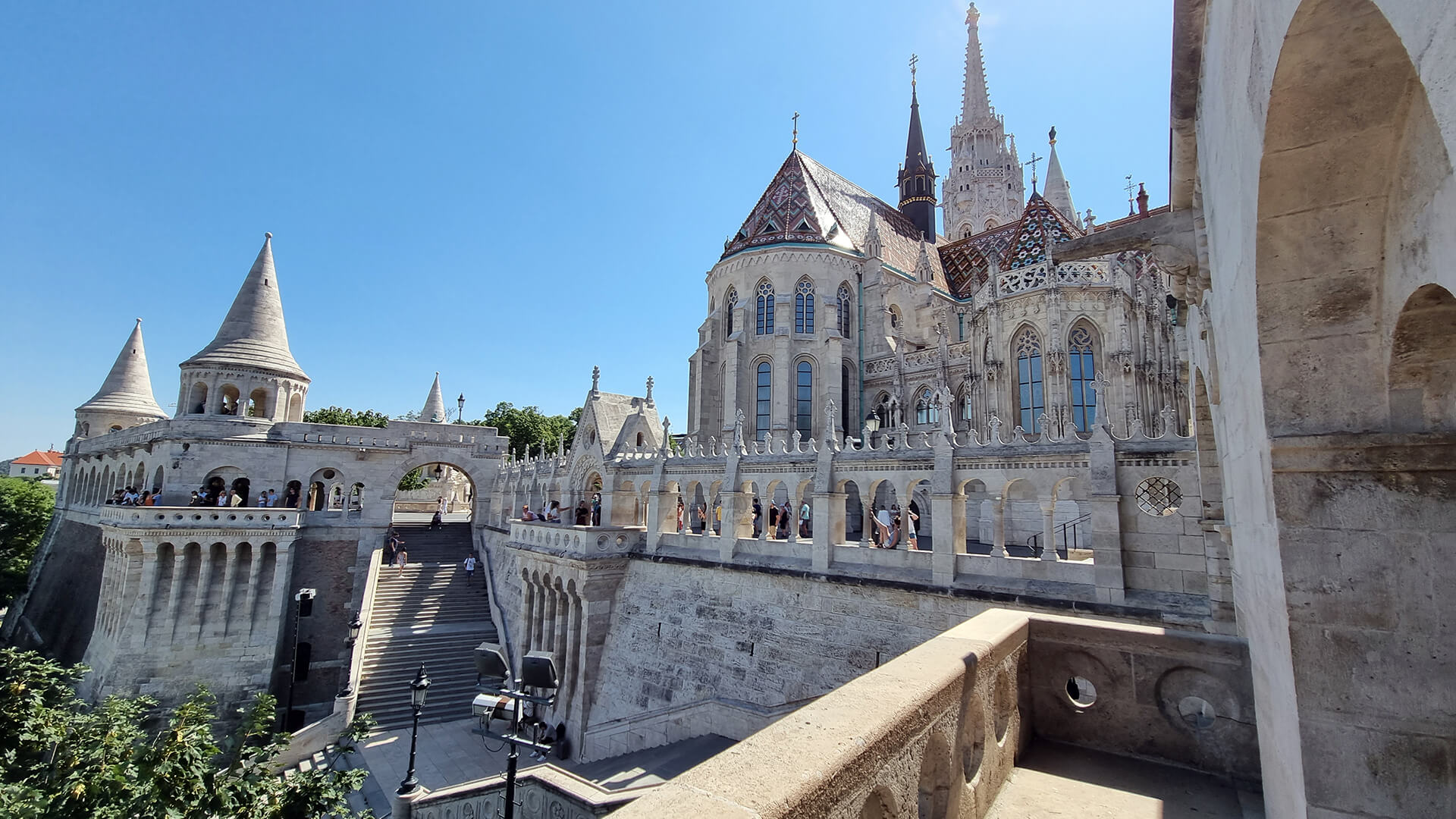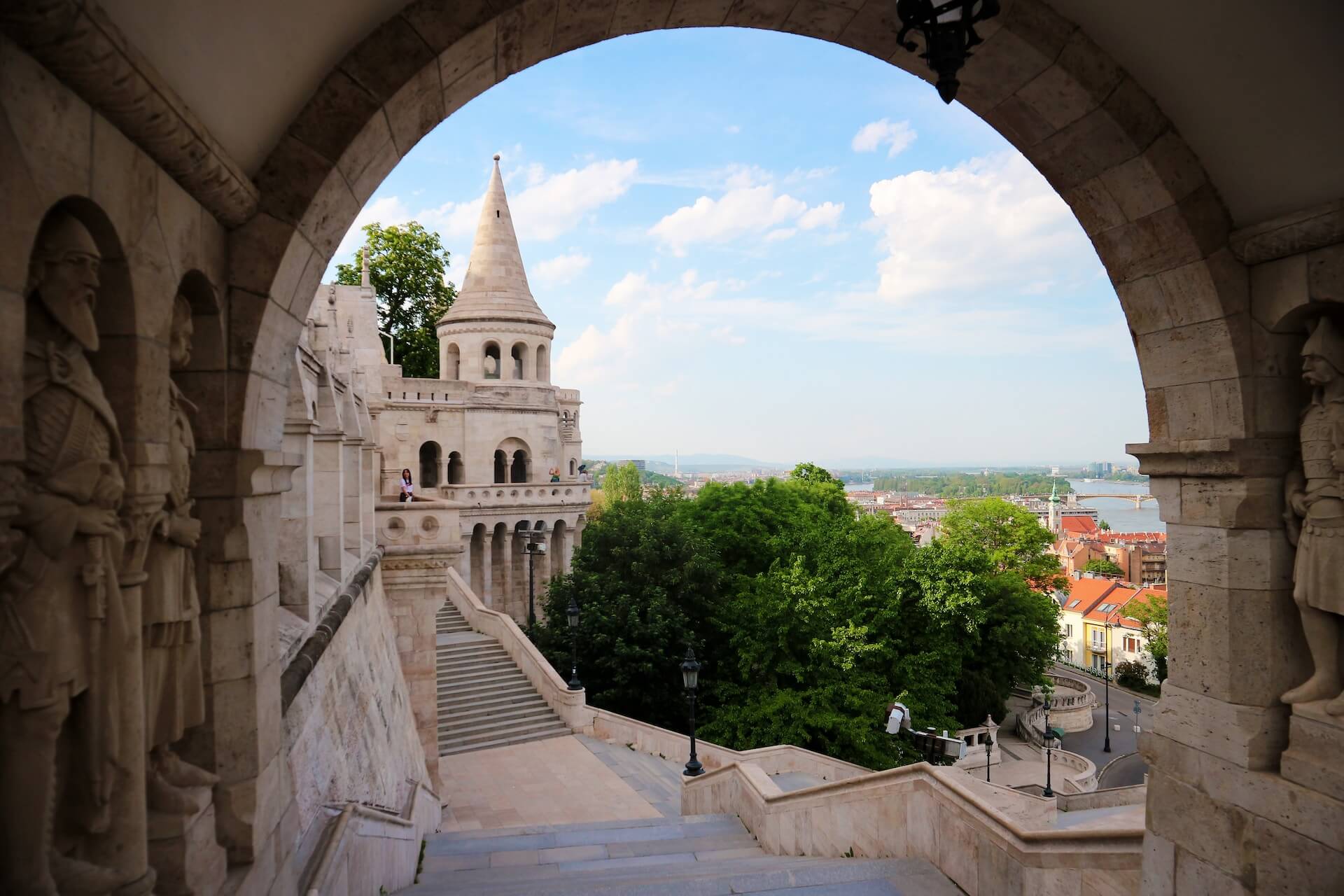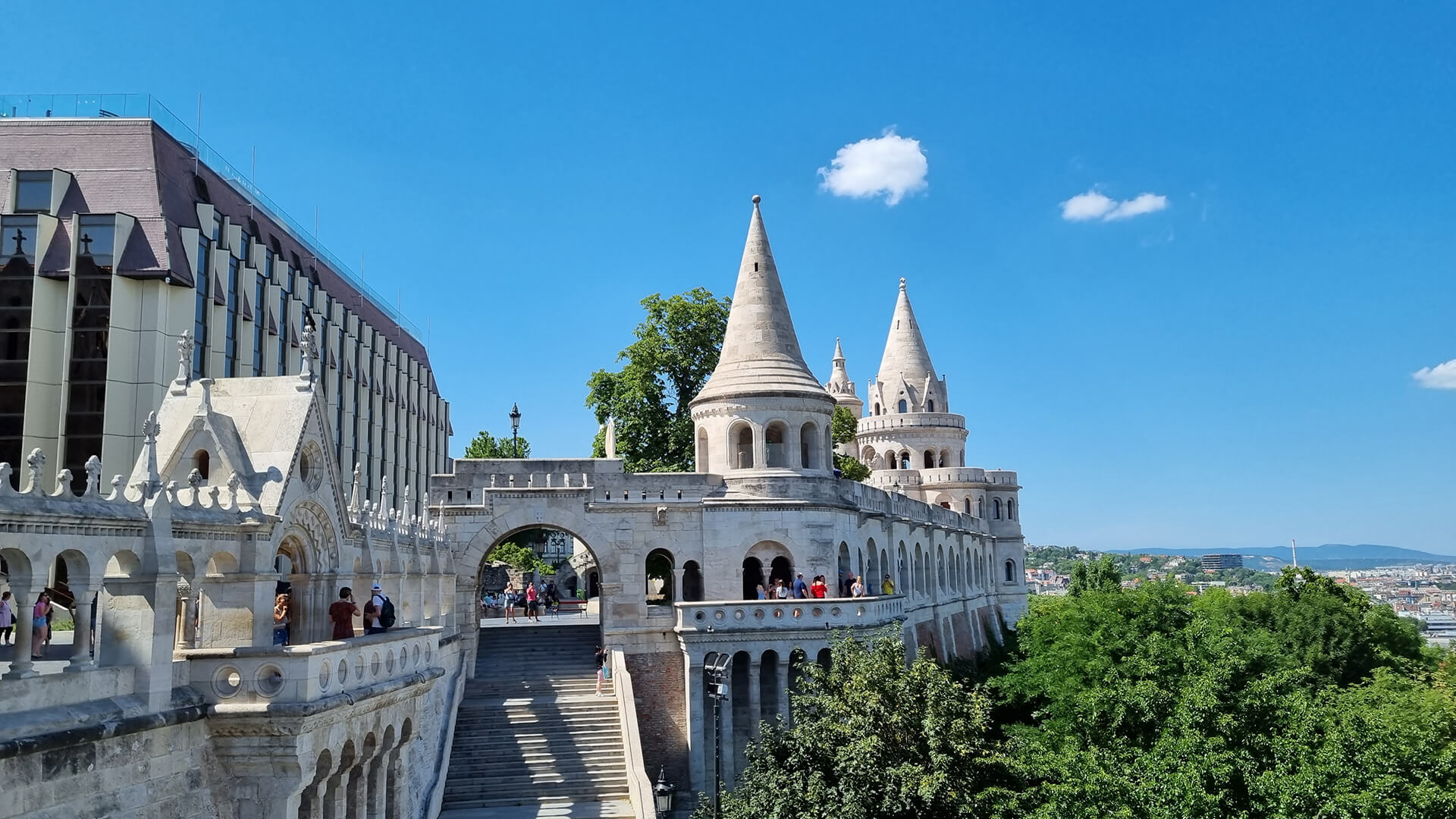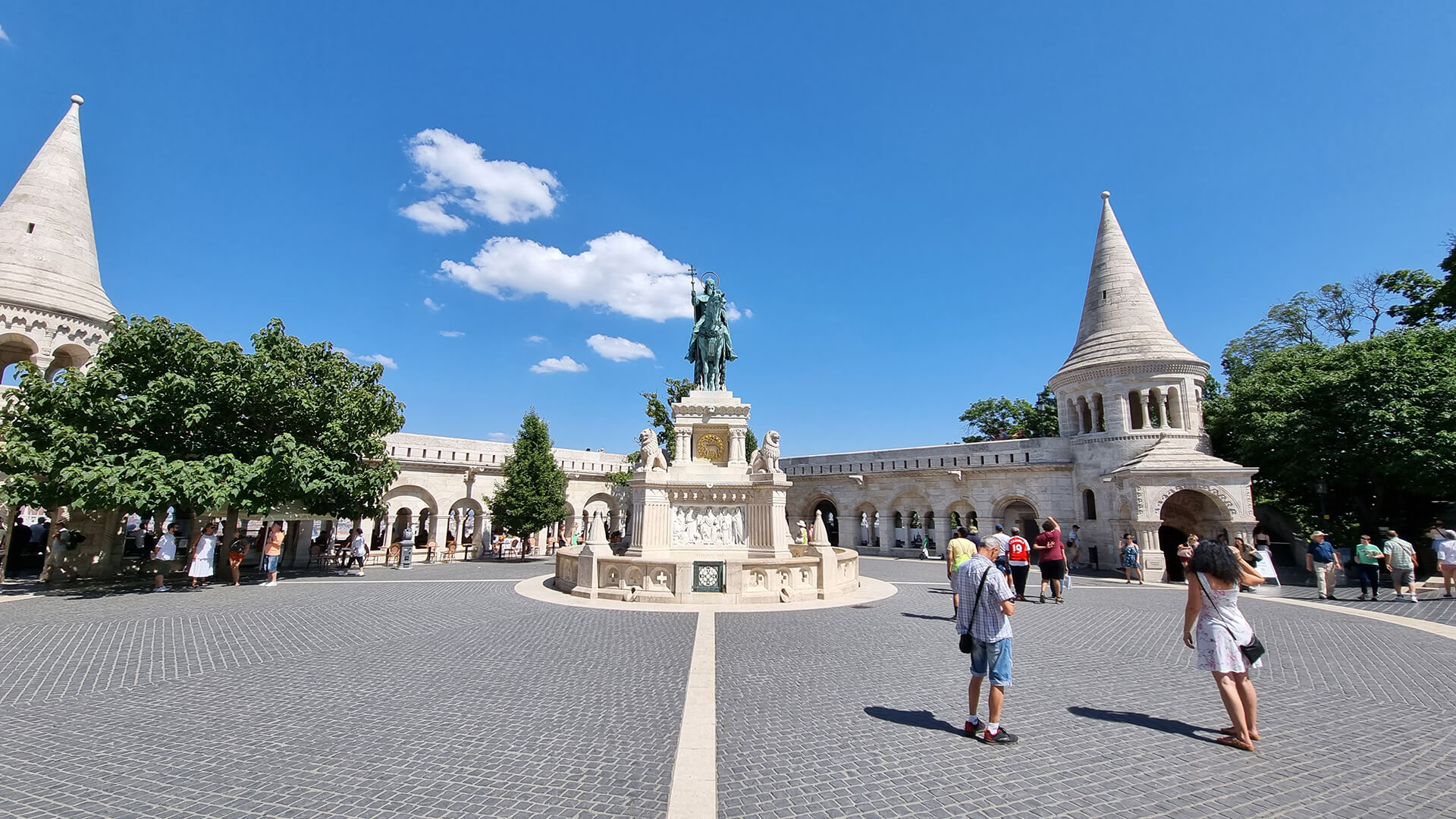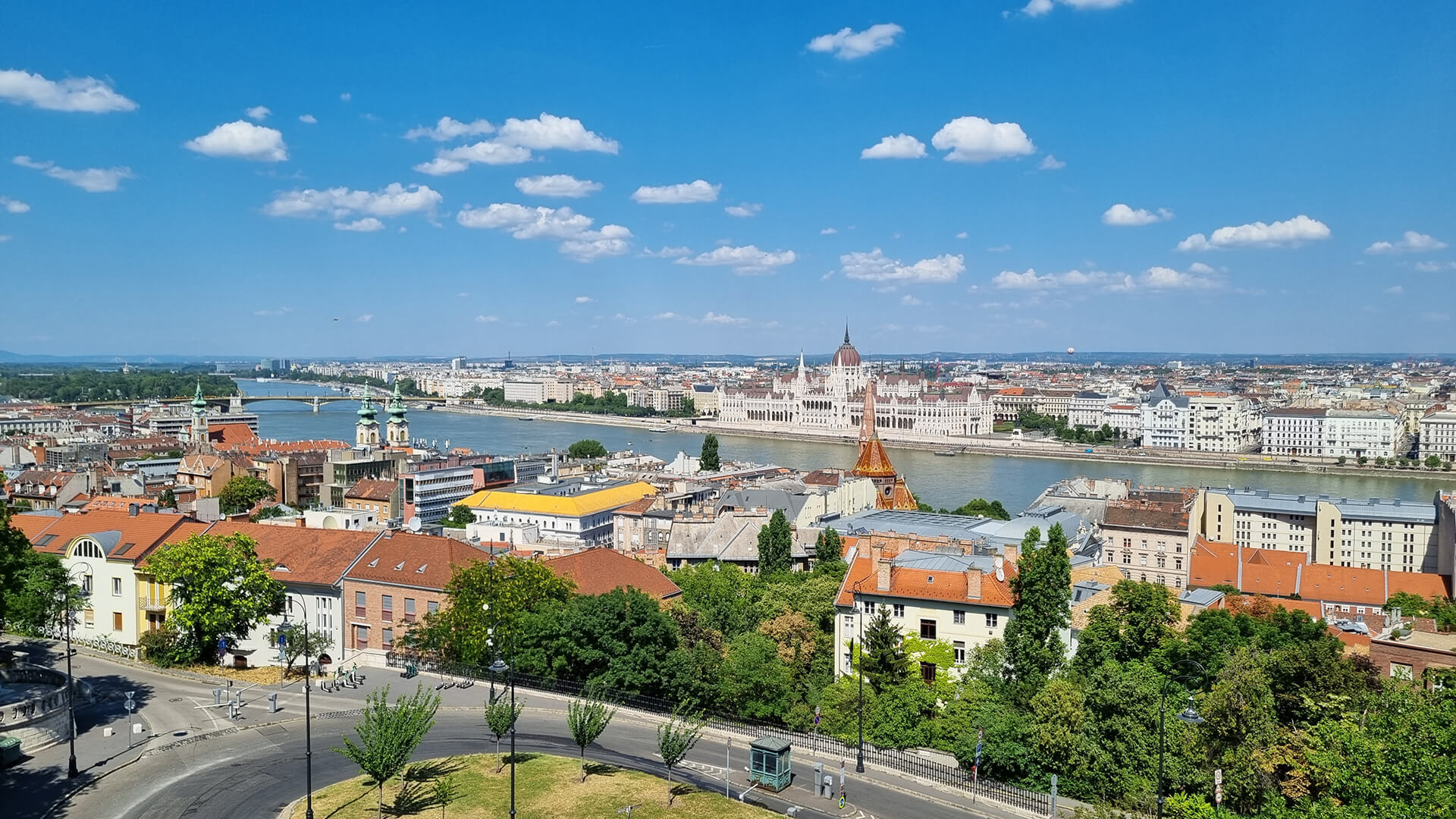Fisherman’s Bastion
Getting to Fisherman’s Bastion
Fisherman’s Bastion is located in the Castle District on the Buda side of Budapest, offering a great panoramic view of the city. Here’s how you can get there:
1. By Funicular: You can take the Buda Castle Funicular from near the Buda end of the Chain Bridge. Once you reach the top, it’s about a 10-minute walk to Fisherman’s Bastion.
2. By Bus: The Castle Bus (Bus number 16) from Széll Kálmán tér will take you up to the Castle District, just a short walk from Fisherman’s Bastion.
3. By Foot: If you’re in good shape and fancy a walk, you can also walk up to the Castle Hill from the Chain Bridge. It’s a steep climb, but it offers wonderful views of the city.
4. By Car: If you are driving, you can use the address (Szentháromság tér, 1014 Hungary) for your GPS. But please be aware that parking in the Castle District is often crowded and may be expensive.
History of Fisherman’s Bastion
Fisherman’s Bastion, also known as Halaszbastya in Hungarian, has a fascinating history that dates back to the late 1800s. The original walls were built in the 1700s as part of the Buda Castle’s fortifications. However, the current structure we see today was constructed between 1895 and 1902 in Neo-Romanesque style by the renowned Hungarian architect Frigyes Schulek. Not only did Schulek design Fisherman’s Bastion, but he was also responsible for the restoration of the Matthias Church, which stands adjacent to the bastion.
The name “Fisherman’s Bastion” is derived from the guild of fishermen (halasz) who lived in the area during the Middle Ages. They protected the castle walls and played a significant role in defending the city. The bastion’s seven high-pitched stone towers represent the seven chieftains of the Hungarians who founded Hungary in 895.
In recognition of its architectural and historical significance, Fisherman’s Bastion has been a designated World Heritage Site since 1987 as part of the Buda Castle District.
Magnificent Architecture and Design
Fisherman’s Bastion is renowned for its intricate and captivating architectural design. The complex consists of two terraces, each offering a unique perspective of Budapest and its landmarks. The lower terrace features grand stairs that lead to the upper bastions and the Matthias Church. The upper terrace is where the true magic happens, with its panoramic view platforms and seven stone towers.
The Neo-Romanesque and Gothic Revival styles blend harmoniously in the bastion’s design, creating a visually stunning structure. The ornate details, arches, and turrets make Fisherman’s Bastion a true architectural gem that leaves visitors in awe.
Spectacular Panoramic Views
One of the main reasons why Fisherman’s Bastion is so popular among locals and tourists alike is the breathtaking panoramic view it offers. From the terraces of the bastion, visitors can admire the stunning sights of Budapest. On one side, the majestic Hungarian Parliament, the four main bridges spanning the Danube, and St. Stephen’s Cathedral dominate the skyline. On the other side, Gellert Hill and Margaret Island can be seen, along with the picturesque urban landscape of Pest.
Photography enthusiasts will find endless opportunities to capture the beauty of Budapest from Fisherman’s Bastion. The arches and towers provide excellent framing for iconic shots of the Parliament building, and the view from the edge of the bastion offers a unique perspective of the city.
Exploring the Attractions
Fisherman’s Bastion is not only a magnificent viewpoint but also a gateway to other notable attractions in the Buda Castle area. Adjacent to the bastion is the Matthias Church, a medieval masterpiece that shouldn’t be missed. Under the ramparts of Fisherman’s Bastion, you’ll find the hidden St. Michael Chapel, where you can immerse yourself in the history of Hungary through a 3D film show. The chapel showcases major events from Hungarian history, providing visitors with a deeper understanding of the country’s rich heritage.
Practical Information for Visitors
When planning your visit to Fisherman’s Bastion, it’s important to be aware of some practical information to make the most of your experience. The bastion is open every day, allowing visitors to enjoy its beauty at any time. There are no restrictions on the opening hours, making it convenient for both early birds and night owls to explore.
Entry to the lower terraces of Fisherman’s Bastion is free of charge. However, if you wish to access the upper towers and view platforms, there is a small fee. Tickets can be purchased on-site at the ticket vending machines, and payment can be made in cash (HUF or EUR) or by debit/credit cards.
To reach Fisherman’s Bastion, there are two main options. The dedicated Buda Castle bus, which is free with the Budapest Card, will take you directly to Holy Trinity Square. Alternatively, if you’re up for a little adventure, you can hike up from the Danube riverbank through a series of steps to reach the bastion.
FAQs
Where is Fisherman's Bastion located?
Fisherman's Bastion is located on the Buda side of the Danube River in the Castle District, specifically at Szentháromság tér, 1014 Hungary.
Why is it called Fisherman's Bastion?
The name "Fisherman's Bastion" comes from the medieval guild of fishermen that was responsible for defending this stretch of the city walls.
What is Fisherman's Bastion?
Fisherman's Bastion is a panoramic viewing terrace with fairy-tale-like towers. Built in the late 19th century, it provides one of the best views in Budapest, overlooking the Danube, Margaret Island, Pest side of the city, and the Gellért Hill.
Is there an admission fee to enter Fisherman's Bastion?
There is no fee to visit the lower terraces of Fisherman's Bastion, but there is a small fee to access the upper towers. Fees may have changed, so please check the official website for current information.
What are the opening hours of Fisherman's Bastion?
Fisherman's Bastion is open 24 hours a day, 7 days a week. However, the ticketed upper towers have specific opening hours that vary based on the season. Check the official website for the most up-to-date information.
Can I eat or drink at Fisherman's Bastion?
Yes, there's a restaurant located within Fisherman's Bastion where you can enjoy food and drinks with a fantastic view over the city.
Is Fisherman's Bastion wheelchair accessible?
Fisherman's Bastion is partially wheelchair accessible. The lower terraces, which are free to enter, are wheelchair accessible. However, the upper towers, which have an admission fee, are only accessible by steps.
Can I take a guided tour of Fisherman's Bastion?
Yes, many city tours in Budapest include a stop at Fisherman's Bastion, and some tour guides may offer specific insights into the bastion's history and architecture.
Are there any special events at Fisherman's Bastion?
Fisherman's Bastion is primarily a historical monument and lookout point, but occasionally it may host concerts or other events.
What was Fisherman's Bastion used for?
Fisherman's Bastion is more of a viewpoint and monument than a traditional "bastion" used for defense. The structure was built between 1895 and 1902 as part of the series of developments that were undertaken for the celebration of the 1000th anniversary of the Hungarian state.
Is it worth going inside Fisherman's Bastion?
Yes, it is absolutely worth going inside Fisherman's Bastion.
How long does it take to walk up Fisherman's Bastion?
The time it takes to walk up to Fisherman's Bastion can vary greatly depending on where you're starting from and your pace.
If you're starting from the base of Castle Hill, where the Buda Castle Funicular is located, it can take approximately 15 to 20 minutes to reach Fisherman's Bastion by foot. This estimate can vary depending on your fitness level, as the hill is quite steep.
Once you've reached the Castle District, the Fisherman's Bastion is just a short walk away from many of the other popular sights such as Buda Castle and Matthias Church. It's a very scenic area, so you might find yourself stopping frequently to take in the sights and snap photos.
What is inside fisherman's bastion?
Viewing Terraces, The Seven Towers, Statue of St. Stephen, Fisherman's Bastion Restaurant
Is Buda Castle and Fisherman's Bastion same?
No, Buda Castle and Fisherman's Bastion are not the same; they are two distinct landmarks located in the Castle District on the Buda side of Budapest.


